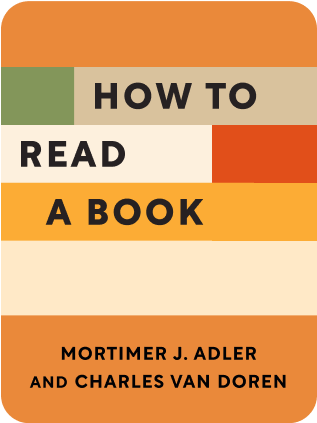

This article is an excerpt from the Shortform book guide to "How to Read a Book" by Mortimer J. Adler and Charles van Doren. Shortform has the world's best summaries and analyses of books you should be reading.
Like this article? Sign up for a free trial here .
How can you tell which are the most important sentences in a book? What are the best ways to unpack complicated sentences?
In How to Read a Book, authors Adler and Van Doren suggest identifying an author’s most important sentences to find their leading proposition. Once you’ve identified the primary proposition, paraphrase it in your own words to make sure you really understand its meaning.
Keep reading to learn the best way to find and unpack an author’s most important sentences.
Finding the Most Important Sentences
After identifying keywords, Adler and Van Doren recommend finding the author’s leading propositions in her most important sentences. Important sentences express parts of the author’s argument. Here are some tips on how to find them:
- Special sentences may be formatted stylistically or set apart (for example, with italics or underlining).
- The important words are often contained in the important sentences. Therefore, if you spot a keyword, pay special attention to the sentence it’s located in.
- Pay attention to words that confuse you, rather than words that grab your interest. (Shortform note: Remember, the goal of analytical reading is to increase your understanding. It’s perfectly fine to pause at a particularly interesting or entertaining sentence—but if your goal is to better understand the author’s ideas, your time is better spent wrestling with sentences you don’t immediately understand.)
| Finding Key Sentences in the Digital Age In the modern era, there are other, high-tech ways of identifying important sentences that Adler and Van Doren couldn’t imagine in 1972. For example, computer programmers in the field of natural language processing have developed algorithms capable of reading digital text and automatically identifying key terms and sentences. The program is partly based on the frequency of a given word in a text, but it has to distinguish between common-but-not-useful words (like “and” or “the”) and the actual keywords of the text. Once the program identifies the keywords based on frequency, it scans every single sentence and highlights those sentences with higher proportions of keywords—which is essentially a computerized version of the process that Adler and Van Doren recommend. |
Identifying Propositions
Adler and Van Doren also advise unpacking complicated sentences to find all the propositions the author is making. For example, in The Body Keeps the Score, author and psychiatrist Bessel van der Kolk writes, “No matter how much insight and understanding we develop, the rational brain is basically impotent to talk the emotional brain out of its own reality.” We can break this sentence down into at least five propositions:
- Scientists have developed at least some understanding of this subject.
- There are two parts of the brain: the “rational brain” and the “emotional brain.”
- These two parts of the brain can be in conflict with one another, despite being part of the same physical organ.
- The rational brain may try to override the emotional brain.
- The rational brain cannot overpower or “turn off” the emotional brain when it is activated.
(Shortform note: Not all sentences that appear complex will actually be critical parts of an author’s argument. In some cases, authors may use overly complex language to mask a weak point in their argument. As you read, you’ll need to distinguish between necessary complexity and fluff.)
According to the authors, once you identify a proposition, you should rephrase it in the way most comfortable to you. This is the best way to verify that you understand it. If you can’t restate the author’s idea in your own words, you may have just memorized the words you’ve read rather than truly understood the idea. This can lead to misunderstandings if you encounter the same argument, phrased differently, in another book—you may think you’re reading a brand new idea when you’re really reading another wording of an idea you’ve already read.
(Shortform note: To make sure your new understanding really sinks in, try writing down this restatement by hand rather than just thinking it through in your head or typing it on a keyboard. The physical act of writing things down on paper requires more brain connections than typing (as your brain is processing a more intense sensory experience as well as coordinating fine motor movements), and those extra connections aid your memory and understanding.)
This is especially helpful for comparative reading—different authors say the same thing in different words, and this will help you see how they agree and disagree. (Shortform note: One example of this is the way different authors discuss the racist idea that people of a certain race are genetically superior to people of another race. In Biased, author Jennifer Eberhardt labels this idea “scientific racism”; in How to Be an Antiracist, author Ibram X. Kendi calls the same idea “biological racism.” If you only think to search for one of these terms, you’d miss out on hearing the other author’s thoughts on this idea.)
Sequences of Sentences Form an Argument
According to Adler and Van Doren, until an author supports her principles with reasons, they are merely opinions. You must distinguish between genuine knowledge and mere opinion. (Shortform note: This isn’t always an easy task, especially in the era of “fake news,” in which both opinions and outright falsehoods are sometimes presented as fact. If you’re unsure whether an author is sharing genuine knowledge or merely her own opinion masked as objective fact, consider consulting independent fact-checking organizations, like FactCheck.org or Snopes.)

———End of Preview———
Like what you just read? Read the rest of the world's best book summary and analysis of Mortimer J. Adler and Charles van Doren's "How to Read a Book" at Shortform .
Here's what you'll find in our full How to Read a Book summary :
- How to be a better critic of what you read
- Why you should read a novel differently from a nonfiction book
- How to understand the crux of a book in just 15 minutes






